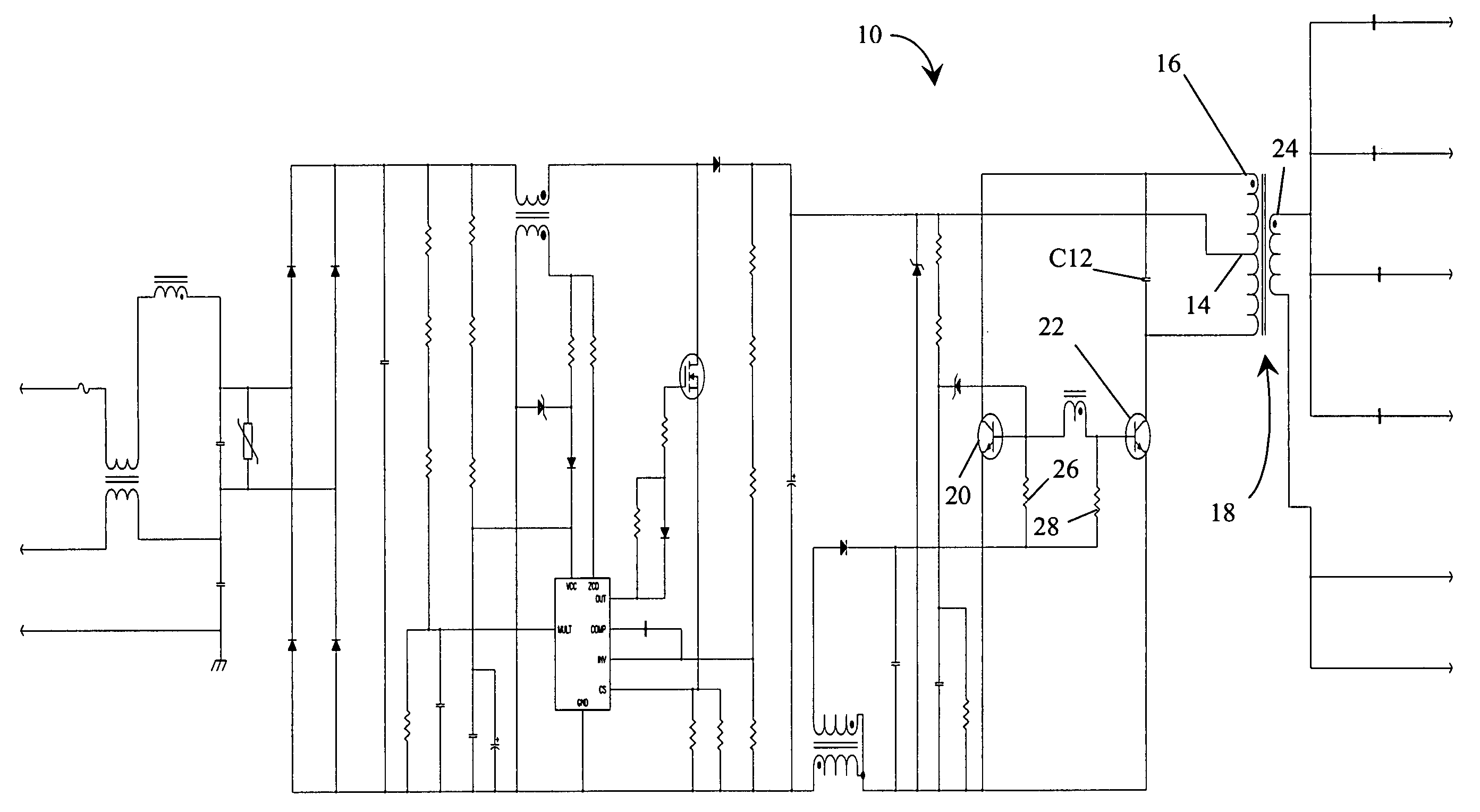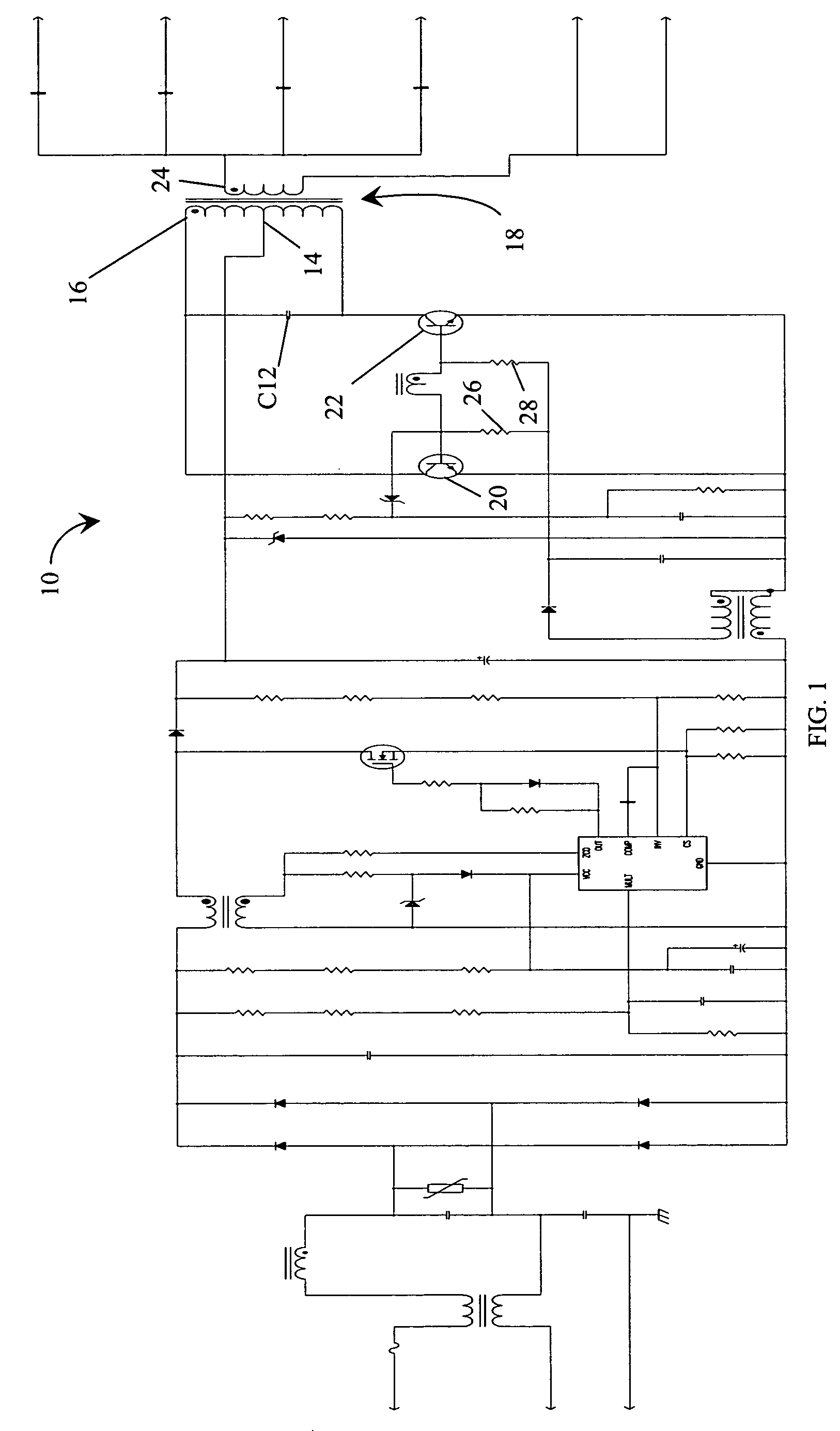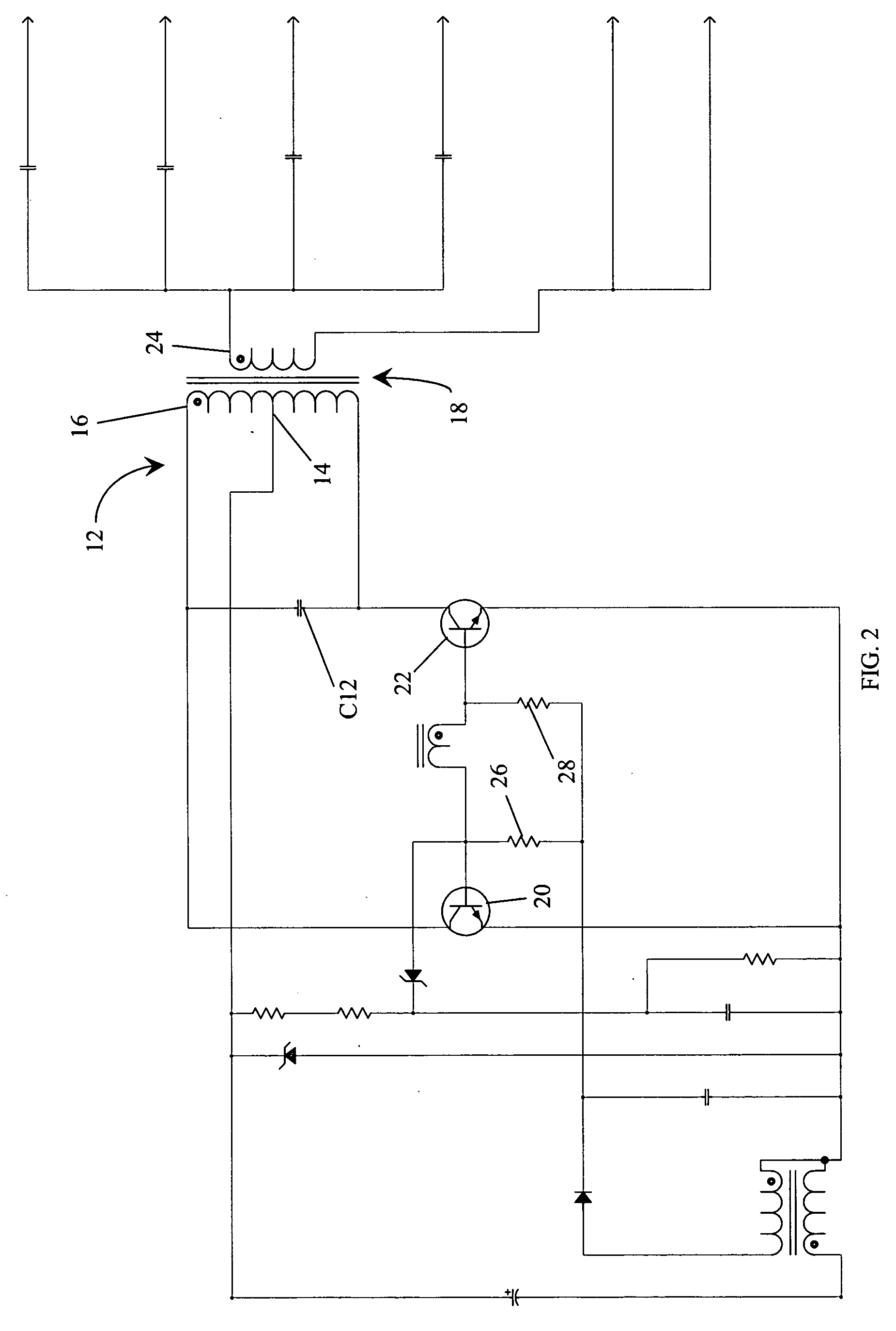Method for controlling striations in a lamp powered by an electronic ballast
a technology of electronic ballast and control method, which is applied in the direction of process control, lighting and heating apparatus, instruments, etc., can solve the problems of increasing the cost and loss associated with electronic ballast, and suffering from the same disadvantag
- Summary
- Abstract
- Description
- Claims
- Application Information
AI Technical Summary
Benefits of technology
Problems solved by technology
Method used
Image
Examples
Embodiment Construction
[0026] In the following discussion, the present invention is discussed with reference to what is commonly referred to as a current-fed, parallel resonant push pull ballast and a current-fed, parallel resonant half bridge ballast. It should be noted that the various aspects of the present invention are not limited to these particular types of ballasts and may be applied to other ballasts as well.
[0027]FIGS. 1-2 are schematic drawings of a conventional parallel resonant push pull electronic ballast circuit 10. FIG. 1 is a drawing of the entire ballast 10 and FIG. 2 is an enlarged view of a portion of the ballast 10 including a push pull inverter circuit 12. The operation of this type of ballast is well known in the art and will not be discussed in detail. In general, however, the ballast 10 is operable to receive a low frequency, 60 Hz, voltage input, convert that input into a substantially constant DC voltage, and then convert that DC voltage into a high frequency (typically greater...
PUM
 Login to View More
Login to View More Abstract
Description
Claims
Application Information
 Login to View More
Login to View More - R&D
- Intellectual Property
- Life Sciences
- Materials
- Tech Scout
- Unparalleled Data Quality
- Higher Quality Content
- 60% Fewer Hallucinations
Browse by: Latest US Patents, China's latest patents, Technical Efficacy Thesaurus, Application Domain, Technology Topic, Popular Technical Reports.
© 2025 PatSnap. All rights reserved.Legal|Privacy policy|Modern Slavery Act Transparency Statement|Sitemap|About US| Contact US: help@patsnap.com



